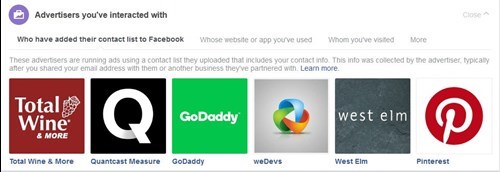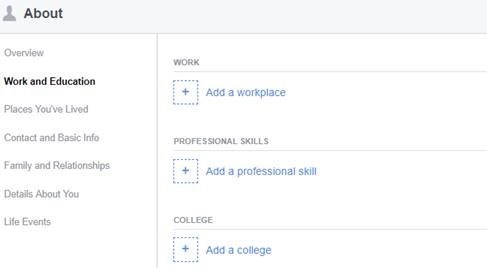How Will Facebook’s Third Party Data Updates Impact Business?
What's happening?
Facebook has recently been under tremendous scrutiny due to data protection issues, culminating with Mark Zuckerberg testifying in front of Congress in April. The issues stemmed from a data-sharing scandal involving Cambridge Analytica, a political data firm, which gained access to private information resulting in a data compromise of 87 million users.
Although this was an acceptable collection of data based on Facebook’s Terms and Conditions, and not technically a data breach since users accepted terms allowing a third party app to access their information, it was a violation of users’ expectation of privacy because personally identifiable information was shared.
As a result, Facebook has decided to remove all third party data providers from their platforms and will shut down the Partner Categories services, an advertising option that allowed companies to use third party data to find customers. While this is a positive step, it categorizes all data providers the same and treats them equally. So, on the one hand, it limits data access to questionable third party apps, like Cambridge Analytica, but it also affects trusted third party data companies like Epsilon and Acxiom, which allow advertisers to target customers based on behavior outside Facebook.
Custom Audience Permission Tool
Facebook has informed advertisers that a permission tool will roll out in the second quarter under which they will need to represent and warrant that contact information (e.g. email address) was rightfully obtained with proper consent. Advertisers have historically been able to upload lists of leads or customers directly into Facebook and target either those lists themselves or separate Lookalike Audiences based on those lists. This move clearly shifts responsibility to advertisers—not Facebook—that user consent must be obtained in order to advertise.
Facebook has informed advertisers that a permission tool will roll out in the second quarter under which they will need to represent and warrant that contact information (e.g. email address) was rightfully obtained with proper consent. Advertisers have historically been able to upload lists of leads or customers directly into Facebook and target either those lists themselves or separate Lookalike Audiences based on those lists. This move clearly shifts responsibility to advertisers—not Facebook—that user consent must be obtained in order to advertise.
Facebook’s statement:
“We believe both first- and third-party data should be held to the same standard — advertisers must ensure that proper consent has been obtained for the use of the data. We will allow advertisers to use third-party data to create audiences on Facebook; however, we will require all advertisers to represent and warrant that proper consent has been obtained for the use of any data uploaded to create a Custom Audience.”
Additional details regarding this tool and how it will work have not yet been released as of this writing.
Facebook Ad Preferences Tab
Facebook users can now see which advertisers are targeting them, through a contact list uploaded to Facebook or by visiting a site through the Facebook Ad Preferences Tab. This could be particularly problematic for advertisers who have not obtained proper consent.
Ad preferences contact list upload example:

Ad preferences retargeting example:

These changes will have direct impact on ongoing, targeted Facebook campaigns. In the following, we have outlined these implications and recommended adjustments to ensure continued campaign success.
What’s the timing?
Facebook Third Party Data to be Removed to Target Ads
Over the next six months, Facebook will first remove the ability to use Partner Categories in Europe to meet General Data Protection Regulation (GDPR) regulations, followed by the U.S. There will be a slow roll-out to introduce these changes and the U.S. timeline is as follows:
June 30: Facebook will no longer allow creating new or editing existing campaigns using non-EU Partner Categories after this date; they will be allowed to run until September 30, 2018.
October 1: All other Partner Categories will no longer be available as targeting options on Facebook and they will stop delivering against these audiences. Clients will be notified to update their targeting by this date if they haven’t already. For most advertisers, June 30 will be the true cutoff date since no campaign changes will be allowed after the date.
Custom Audience Permission Tool
Facebook expects the tool to be released sometime in May or June 2018.
Facebook Ad Preferences Tab Released
What does this mean for advertisers?
This shift away from third party data providers will eliminate some of the enhanced targeting that has been employed in many campaigns including parameters such as household income, behavioral categories like “renters” or “in-market car shoppers”, and qualifiers such as multicultural targeting.
Instead, Facebook’s behavior data, including categories like job title and education, will be utilized. Although they are less robust and rely on user-initiated interests and behaviors, which are narrower in scale, they are also more likely to be accurate and reflect active interests since they are public and self-identified. So, while multicultural targeting, for instance, will no longer be directly available, a multicultural audience can still be accessed based on affinities (Hispanic audience being identified based on telenovela “likes”).
Below is an example of some targeting parameters that will be available:


Due to these changes, the number of target users that can be reached within current campaigns may decrease, however it could also potentially increase based on the size of the Facebook interest category. Regardless, Facebook’s auto-optimization software will reach the most applicable users within these audiences. This could also potentially influence cost-per-action (CPA) as there will be more competition for available targeted impressions. As advertisers and Facebook’s algorithms learn, CPAs should find a new normal per industry and budget.
Consent / Privacy Policies / Terms of Use
Now more than ever, advertisers need to ensure proper consent has been obtained to utilize user data for ad targeting. This includes proper consent up front and privacy policies and terms of use that clearly define how user data is collected and used. Advertisers should review these areas to ensure everything is up to date and in line with data practices.
USIM’s Point of View
USIM continues to believe in the strength of paid social, and Facebook in particular, as an effective media tactic that can help build awareness, consideration and generate leads and sales. While campaigns may experience some shifts that will impact historical CPMs and CPAs, rates will likely continue to be significantly lower than other media channels.
That said, USIM will take action by monitoring campaigns to get ahead of these targeting changes with optimizations and testing opportunities that will help keep costs close to historical levels and CPAs in line with individual client goals.
Current & Long-Term Planning
Facebook is rolling out changes slowly, which allows time for optimization and testing alternate targeting opportunities before third party targeting is disabled. Eventually, campaigns will need to be re-launched and new performance baselines will need to be established.
In the interim, USIM recommends the following actions:
New interest categories
Investigate new first party data and interest categories available through Facebook that closely mirror previously used third party categories. In some cases, the Facebook audience will have a smaller audience, but they will be further down the conversion funnel as this is a user-identified interest. For example, interest in coupons has 100,000 users on Facebook vs. 1,000,000 through third party targeting; however, these users have self-identified, so it’s more likely to be an accurate and active interest. Categories like HHI are hard to replicate through interest category because people don’t self-identify their incomes on their profile pages, but it is still possible to reach a more affluent audience, for example, by focusing on “likes” of luxury products.
Access custom audiences based on pixels Place more focus on developing custom audiences based on enhanced pixel implementation on website pages. For example, a travel client could segment audiences investigating hotels vs. those looking for things to do while on vacation.
Lookalike targeting Facilitate utilization of first party data to enable lookalike targeting using Facebook’s demo and interest data in place of third party targeting. First party data will help secure users that are similar to current customers. This form of targeting would have been ideal regardless of the Facebook changes, but is more important given the current landscape. Therefore, if possible, CRM lists and website visitor activity should be shared to facilitate lookalike targeting within the Facebook platform.
In the long term, we anticipate Facebook will provide more comprehensive solutions and targeting capabilities given this change is sudden and not by design even for Facebook. USIM will continue to monitor, test and explore opportunities within and outside of Facebook.
